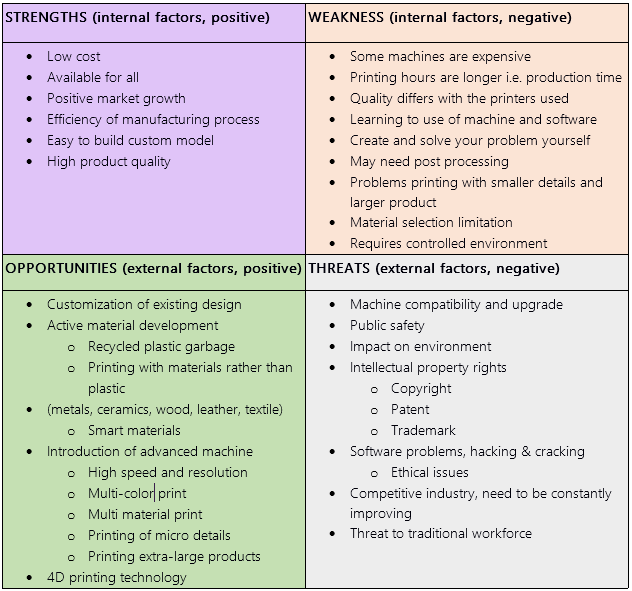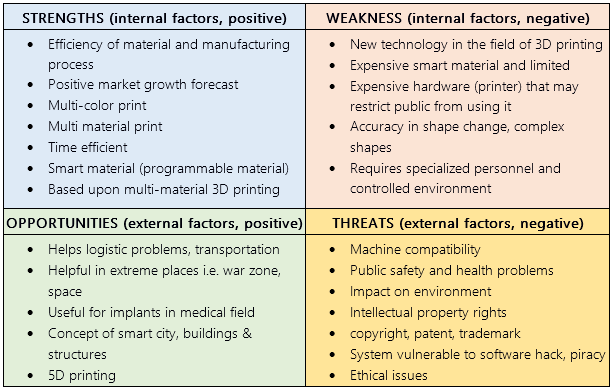Any emerging technology brings changes both positive and negative. Despite carrying profound implications for construction, industry, military and medical field, the benefits of 3D and 4D printing technology remain offset by many technical and legal challenges. There are concerned areas need to be addressed including design certification and standardization, environmentally friendly and sustainable development, patenting and intellectual property law. Since the processes involved in both technologies are very much similar, certain rules and regulations while adopting these technologies remain considerably identical. Along with the benefits, risks including ethical implications, public safety, and intellectual property rights need to be handled properly. (Al-Rodhan, 2014)
A SWOT analysis of 3D Printing Technology
A SWOT analysis is carried out by any company, person or product. This process involves specifying the objective of any project identifying an internal and external factor that is suitable and unsuitable to achieve the project goal. Similarly, for 3D printing technology, SWOT analysis as shown in below table specifies internal positive and negative factors as well as external positive and negative factors.
 |
SWOT analysis of 3D printing
|
A SWOT analysis of 4D Printing Technology
Similar to the SWOT analysis of 3D printing technology as in Table 3, the analysis of 4D printing is used to identify strengths, weakness, opportunities, and threats related components shown in the below table, for 4D printing technology.
 |
| The SWOT analysis of 4D printing |
Comparing SWOT analysis of both 3D printing and 4D printing technology, it is clearer that 3D printing technology has advanced a lot than 4D printing. Nevertheless, 4D printing being a new invention opens the door towards endless opportunities in the research field of printing.

0 comments